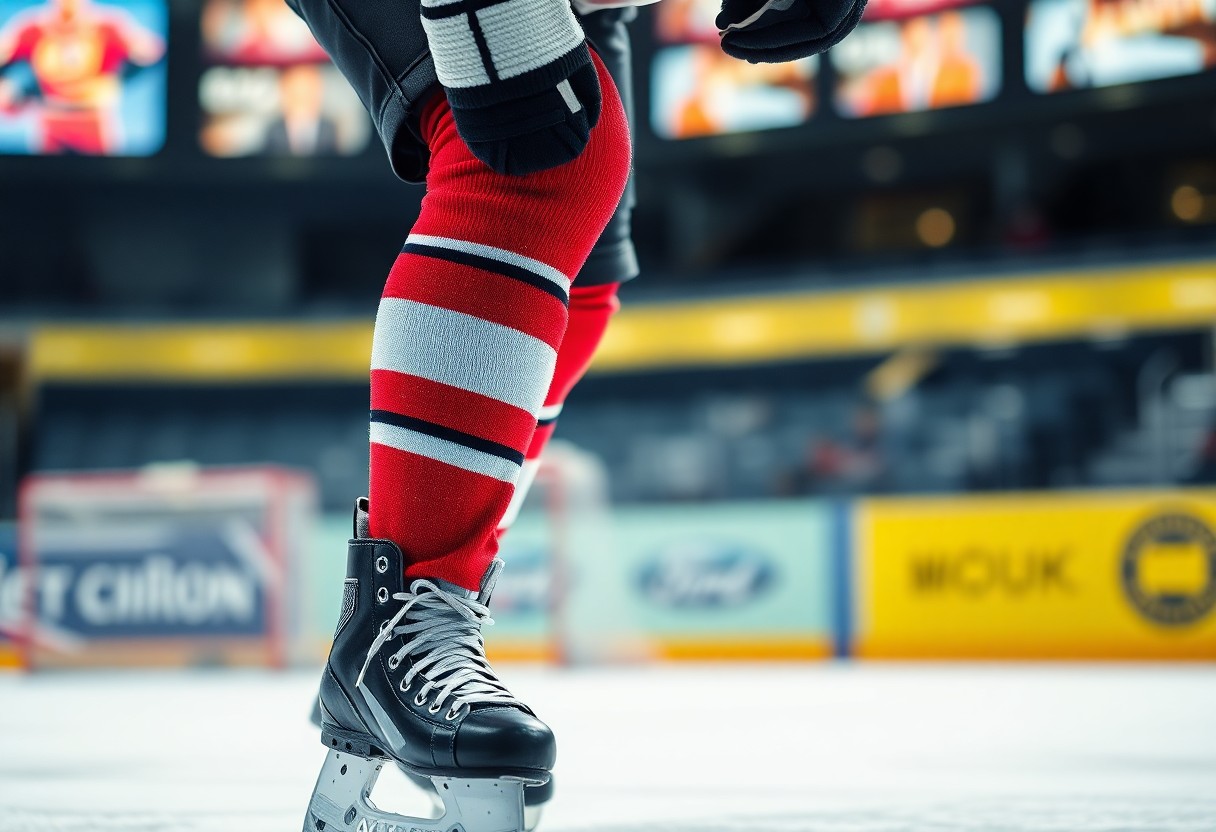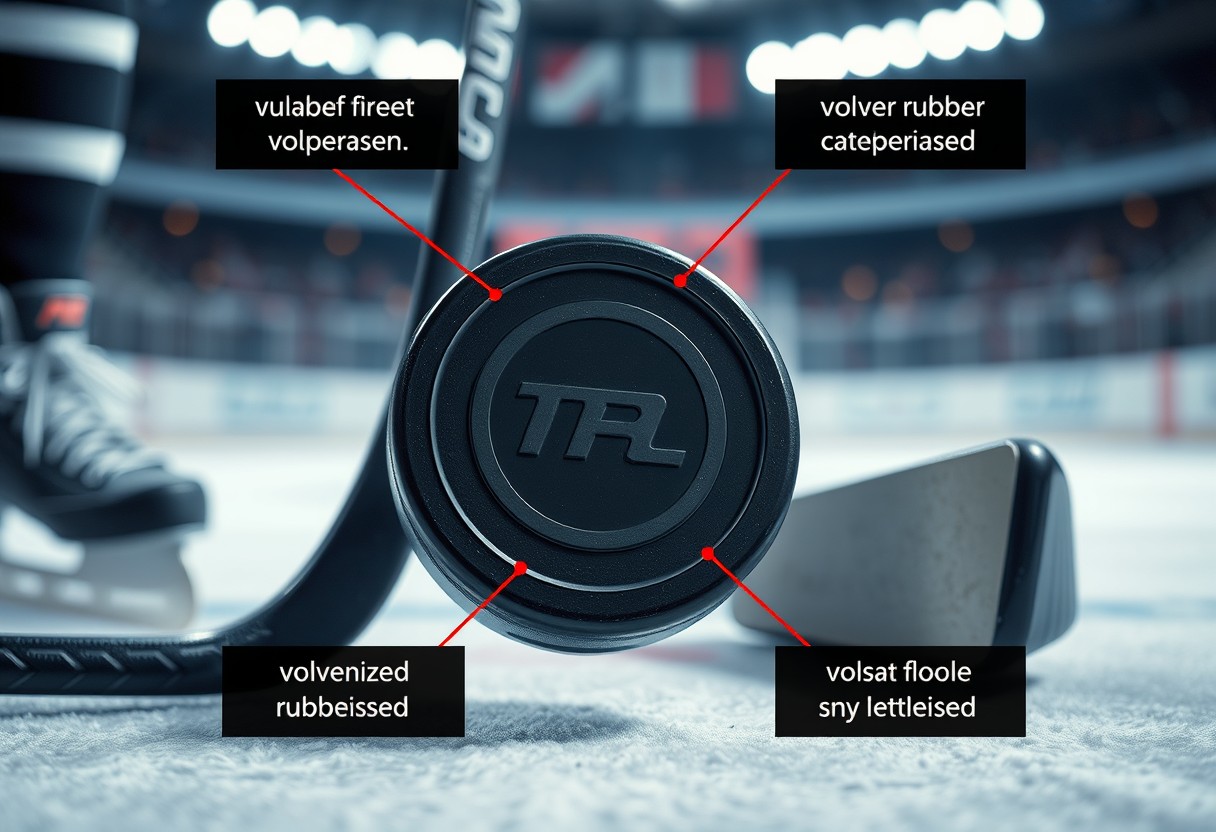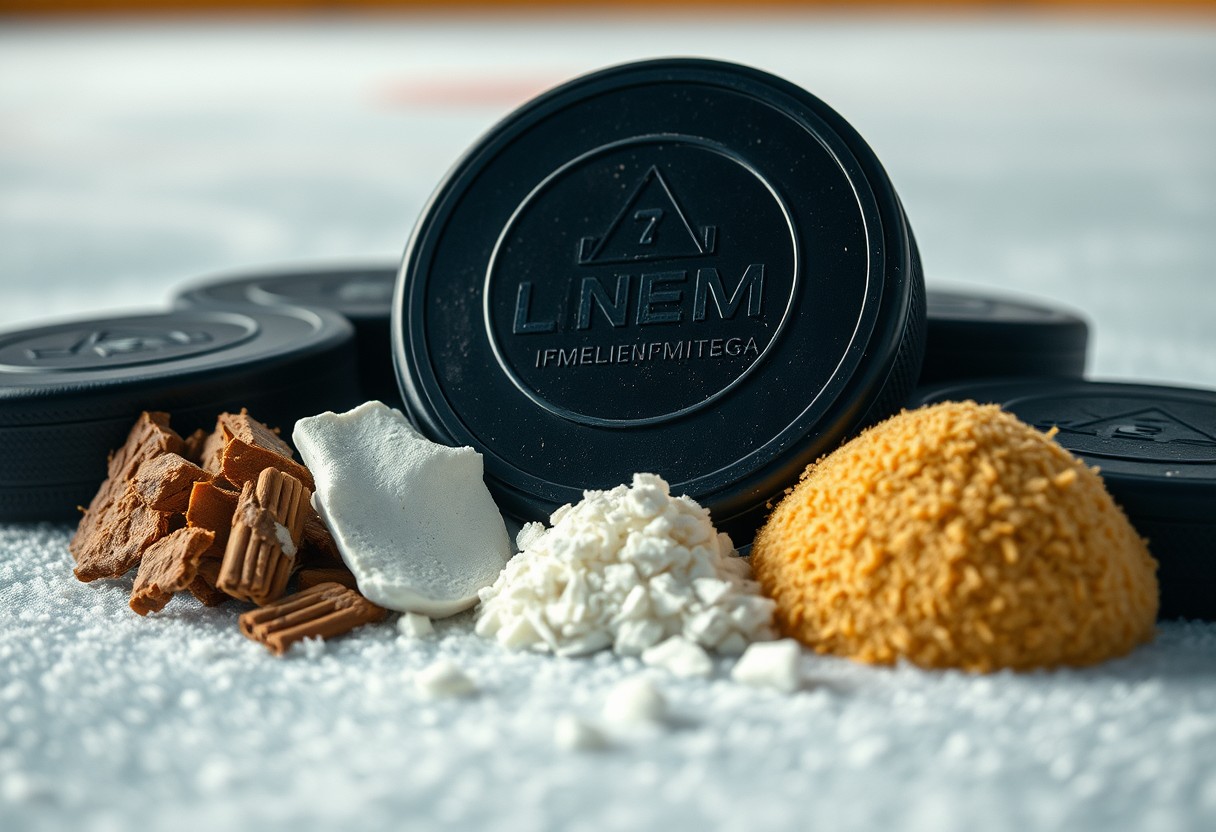Over the years, you’ve likely wondered whether hockey players wear socks during games and practices. Understanding the gear worn by these athletes can enlighten you about their performance and comfort on the ice. In this post, you’ll discover not only if hockey players don socks, but also the types of socks they choose and their importance in enhancing your overall experience on the rink. Join us as we look into the details of hockey apparel and the role socks play in this thrilling sport!
The Purpose of Hockey Socks
While often overlooked, hockey socks serve several important purposes that enhance your overall playing experience. Designed to provide both protection and comfort, these socks help keep your legs warm and facilitate the effective use of protective gear. By understanding their value, you can make better choices when selecting your hockey attire.
Injury Prevention
Above all, one of the primary functions of hockey socks is to help prevent injuries. By extending over your shins and providing an extra layer between your legs and equipment, they reduce the risk of abrasions and impacts. This added protection is necessary, especially during intense moments on the ice.
Comfort and Performance
The fit of your hockey socks directly influences your comfort and performance on the ice. Properly fitted socks prevent bunching or slipping, allowing you to maintain focus on your game without distractions. A snug fit also helps regulate temperature and moisture, keeping your feet dry and comfortable during play.
Consequently, investing in high-quality hockey socks can significantly enhance your game. When your feet stay dry and well-supported, you can move more freely and efficiently. By choosing socks that wick away moisture and provide padding, you ensure that little inconveniences will not detract from your performance. Overall, comfortable socks contribute substantially to your ability to play at your best and enjoy the game more.

Types of Socks Worn by Hockey Players
Clearly, hockey players choose various types of socks to enhance performance and protection during games. These include:
- Performance Socks
- Compression Socks
- Thermal Socks
- Moisture-Wicking Socks
- Customized Socks
Thou will find that the right type of sock can significantly impact your game.
| Type of Sock | Description |
|---|---|
| Performance Socks | Designed for optimum fit and breathability. |
| Compression Socks | Enhance circulation and reduce muscle soreness. |
| Thermal Socks | Provide warmth in cold conditions. |
| Moisture-Wicking Socks | Keep feet dry by managing sweat. |
| Customized Socks | Personalized options for comfort and fit. |
Performance Socks
Beside providing comfort, performance socks enhance your on-ice effectiveness. These socks are crafted from breathable materials that keep your feet cool and dry. They usually feature a snug fit to prevent slipping inside your skate, allowing you to maintain agility during gameplay.
Protective Gear
With various risks associated with hockey, protective gear, including specialized socks, is vital. These socks help shield your legs from impacts and abrasions that can occur during intense gameplay. They often incorporate padding in critical areas for added comfort and protection.
But choosing the right protective socks can be a game-changer. They not only absorb shock from falls and collisions but also provide an outer layer of defense against skate blades or puck impacts. Ensuring these socks fit well and are made from durable materials can help keep you safe and focused on your performance.
Sock Length and Fit
Assuming you want optimal performance on the ice, the length and fit of your hockey socks play an important role. The right size ensures that your socks stay in place during rapid movements, while the length helps to protect your legs and keep you comfortable. Finding the right balance between these factors can significantly enhance your overall hockey experience.
Standard Lengths
On average, hockey socks come in various standard lengths, including knee-high and crew lengths. Knee-high socks are generally preferred for their superior coverage, while crew lengths offer added comfort for players who prefer more freedom of movement. Your choice will largely depend on your personal preference and the type of protection you desire during play.
Importance of Fit
Importance of fit cannot be understated when it comes to hockey socks. A snug fit ensures that your socks don’t bunch up, which can lead to discomfort or blisters during the game. Properly fitting socks also help in maintaining circulation and providing support to your lower legs, enhancing your performance on the ice.
Standard socks that are neither too tight nor too loose will provide the best combination of comfort and functionality. When trying on socks, pay attention to how they feel around your ankles and calves. If they feel restrictive, you may want to opt for a slightly larger size, while socks that slide down can hinder your play and require frequent adjustments. Investing time in finding the proper fit will pay off in improved performance and comfort on the rink.

Maintenance and Care
To ensure your hockey socks remain in excellent condition, it is vital to prioritize maintenance and care. Regularly checking for wear and tear can extend their lifespan and enhance your overall performance on the ice. By implementing a proper cleaning routine and following vital tips, you can keep your socks in peak condition and ready for every game.
Washing and Drying
Along with regular maintenance, washing your hockey socks properly is vital. Always follow the manufacturer’s instructions for care. Typically, you should use cold water and a gentle detergent to avoid damaging the fabric. After washing, allow them to air dry instead of using a dryer, as excessive heat can cause shrinkage and wear.
Longevity Tips
With some simple tips, you can significantly enhance the longevity of your hockey socks. Consider the following practices:
- Avoid using fabric softeners, as they can break down the material.
- Rotate your socks regularly to prevent excessive wear on a single pair.
- Store them in a cool, dry place to maintain elasticity.
This approach will help maintain their performance and comfort over time.
Consequently, taking these steps ensures that your hockey socks will serve you well through many seasons. Implement these additional tips for further care:
- Inspect your socks after each use for any signs of damage.
- Patch or repair minor tears immediately to prevent further deterioration.
- Washing them inside out can help preserve the outer layer.
This care routine will enhance your performance and comfort during games.
Common Myths About Hockey Socks
Not every player opts for socks that come with their gear; many myths surround the necessity of hockey socks. People often believe that hockey players don’t wear socks at all or that the type of socks doesn’t matter. Others suggest that socks are simply an afterthought in a player’s equipment, leading to confusion regarding their importance in comfort and protection on the ice.
Misconceptions
Socks are often dismissed as a minor accessory in hockey gear, but they play a significant role in your overall performance. Contrary to belief, properly fitted socks can prevent injuries, provide insulation, and enhance your comfort level during games. Many players overlook this aspect, leading to misunderstandings about their necessity.
Facts vs. Fiction
For every myth about hockey socks, there exists an crucial fact that highlights their importance. Many players assume that any athletic sock will suffice. However, hockey-specific socks are designed to stay securely in place under your shin guards, preventing bunching and ensuring a snug fit throughout the game. Additionally, these socks often incorporate moisture-wicking materials that keep your feet dry, reducing the risk of blisters and improving your overall experience on the ice.
Misconceptions about hockey socks often lead players to prioritize other gear while neglecting their sock choice. Many believe that any pair of socks is adequate, but hockey socks are specifically engineered to meet the demands of the sport. The right socks not only enhance your comfort but also contribute to better performance. By understanding the true function of hockey socks, you can make informed decisions that ultimately enhance your game. Odds are, investing in quality hockey socks will leave you feeling much better throughout your matches.
FAQs Regarding Hockey Socks
Once again, you may have questions about hockey socks and their role in the game. Understanding the specifics of how socks function in conjunction with other gear can help enhance your experience on the ice. Here, we’ll tackle some common inquiries you might have about hockey socks.
Do all players wear socks?
At the professional level, all players typically wear socks designed explicitly for hockey, as these provide necessary support and comfort. However, some players may opt for alternative styles or forgo traditional socks altogether, especially at less formal levels of play. Ultimately, it depends on personal preference and the equipment regulations of the league.
Can socks impact game performance?
Regarding your performance, the type of socks you wear during a game can indeed make a difference in your comfort and mobility. Properly fitted socks can help prevent blisters and keep your feet insulated, allowing you to maintain focus during gameplay.
FAQs can often lead you to consider how little aspects of your gear, like socks, can influence your performance. If your socks are too tight or too loose, you might experience distraction, discomfort, or even inhibit your movement on the ice. Selecting socks made with moisture-wicking materials can keep your feet dry and comfortable, allowing you to skate more efficiently and effectively during the game.
Final Words
Conclusively, if you’re delving into the world of hockey, it’s crucial to understand that wearing socks is an integral part of your equipment. Hockey players typically wear specialized socks designed to provide comfort and protection while interacting with skates and shin guards. These socks not only perform optimally on the ice but also help maintain your body temperature during intense play. As you enhance your gear selection, prioritizing the right hockey socks will significantly contribute to your overall performance and comfort on the ice.




